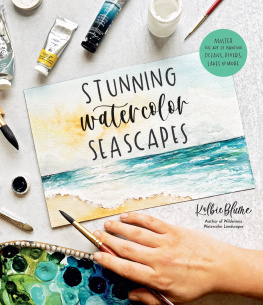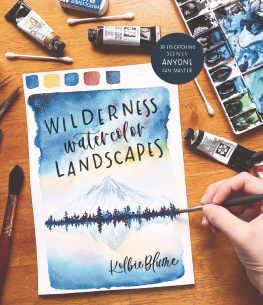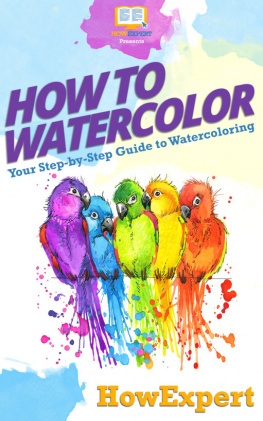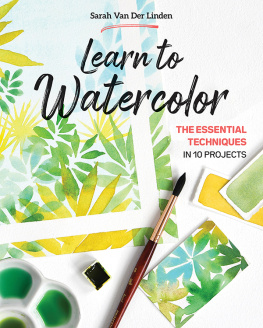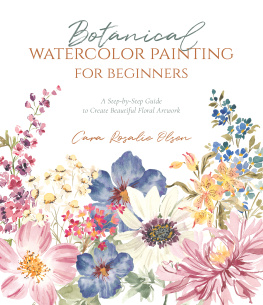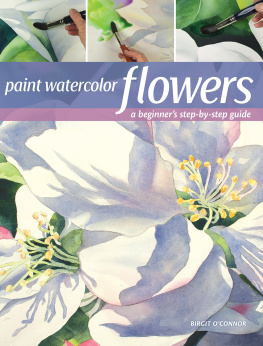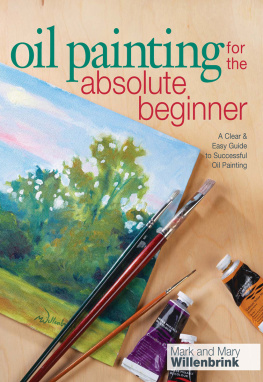Contents
Guide
MASTER
THE ART OF PAINTING
OCEANS, RIVERS,
LAKES & MORE
STUNNING
Watercolor
SEASCAPES
Kolbie Blume
Author ofWilderness Watercolor Landscapes

The author and publisher have provided this e-book to you for your personal use only. You may not make this e-book publicly available in any way. Copyright infringement is against the law. If you believe the copy of this e-book you are reading infringes on the authors copyright, please notify the publisher at: http://us.macmillanusa.com/piracy.
FOR ANDERS, WHOSE PURE, UNADULTERATED WONDER INSPIRES MY BEST WORK.
Soon after I painted my first watercolor night sky and learned that achieving beautiful results was possible even for a newbie, I set about painting more of my favorite things. The ocean was close to the top of that list, but I quickly realized painting the ocean was decidedly not easy. Quite difficult, in fact. So difficult that after my first go, I didnt try again for an embarrassingly long time.
Thinking back on the years of telling my students that messy middles and frustrating experiments were all part of every creative journey, I decided to dive in again and really figure out a way through. I replaced my expectations and judgment with curiosity and a thirst for exploration, and after making a lot of messes and recycling a lot of paper along the way, I discovered something magical: If I can break down complicated things into small enough pieces, I can figure out anything, one layer at a time.
Thats what this book is about. I want to show you how I piece together watercolor seascapes through bite-sized brushstrokes and layers that grow to create truly stunning results.
But more than that, I want you to know that if youre frustrated with your progress, or if you think youre just not good enough to tackle difficult subjects like moving water, youre not alone. Watercolor is hard. Its also rewarding, visually stimulating, stress-relieving, and all of the other things that make the hard parts worth it.
And, if you discover some of the puzzle pieces you didnt know you were missing (like the ones in this book), it will be a little bit easier. I created these projects and lessons with beginners in mind so that, hopefully, you dont have to wait as long as I did to paint captivating seascapes.
We start small in Chapter 1 (), going over supplies first, then basic techniques youll use in virtually every project. After that, each of the 25 step-by-step scenes will help you practice those techniques in unique and challenging ways. If you start at the beginning, the projects will be on the simple side and slowly grow in difficulty and complexity. Some will challenge you, and after others, I expect youll think to yourself: Wow! I never wouldve guessed this scene was so simple.
My best advice is to approach the projects in this book more like studies rather than masterpieces. If you go into a project expecting to perfect the techniques on the first try, youll almost certainly be disappointedand disappointment usually leads to a lack of motivation, which leads to less practicing, which leads to stagnating skill over time. But! If you replace your expectations with curiosity, youll be a winner every time. As long as you learned something or felt something, no piece of art is ever a waste.
To help you practice studying rather than mastering, try taking a large sheet of watercolor paper and using masking tape to separate it into four small sections. Then, paint each project four different times, each time trying something new based on what youve learned along the way. With this method, your main focus isnt to get it right; its to experiment, learn, and discover.
By the way, I cant take all the credit for this idea: Some of my students shared this study method with me, and I knew it would make a difference for you, too.
I dont teach watercolor to help people learn how to paint. I teach watercolor to help people unearth their infinite creative worth, to realize that they are whole and worthy of celebration in all of their messiness and imperfections. Art is just one way to channel that celebration, and its a really effective one.
You, my friend, are an artist, regardless of how successful your art is. I hope painting seascapessome of the most wild and constantly changing sources of inspiration in the known universewill help you remember that breathtaking views often come from a little chaos, and that imperfections are usually so much more powerful than you can imagine.
Happy painting.

By the way, if you want to share on social media, I would love to be your biggest cheerleader. Feel free to tag me on Instagram (@thiswritingdesk) and use #StunningWatercolorSeascapes and #WildernessWatercolorClub so I can see your beautiful work!
You can create beautiful work with whatever supplies you have on hand. Still, investing in high-quality supplies can reduce frustration while youre learning and make your watercolor experience even more magical.
For each of the main supplies below, Ive listed the artist-grade versions Im using as well as my favorite high-quality student-grade substitute if youre on a budget.
PAINT
Watercolor most often looks like dried cakes in a pan palette set or watercolor paste in a tube. I usually buy my watercolor in tubes, squeeze a bit from each tube onto a palette, and let it dry for a few days before painting. A little watercolor can go a long way!
Whats on my desk: A custom 12-color palette of artist-grade paint using the brands Winsor & Newton (WN), Daniel Smith (DS), Sennelier (S), and Dr. Ph. Martins Bleedproof White for my white gouache
Opera Rose (WN), Quinacridone Rose (DS), Scarlet Lake (WN), Yellow Ochre (DS), Lemon Yellow Deep (WN), Hookers Green (DS), Viridian (S), Cobalt Turquoise Light (WN), Phthalo Turquoise (DS), Prussian Blue (S), Paynes Gray (WN), Burnt Umber (DS)

